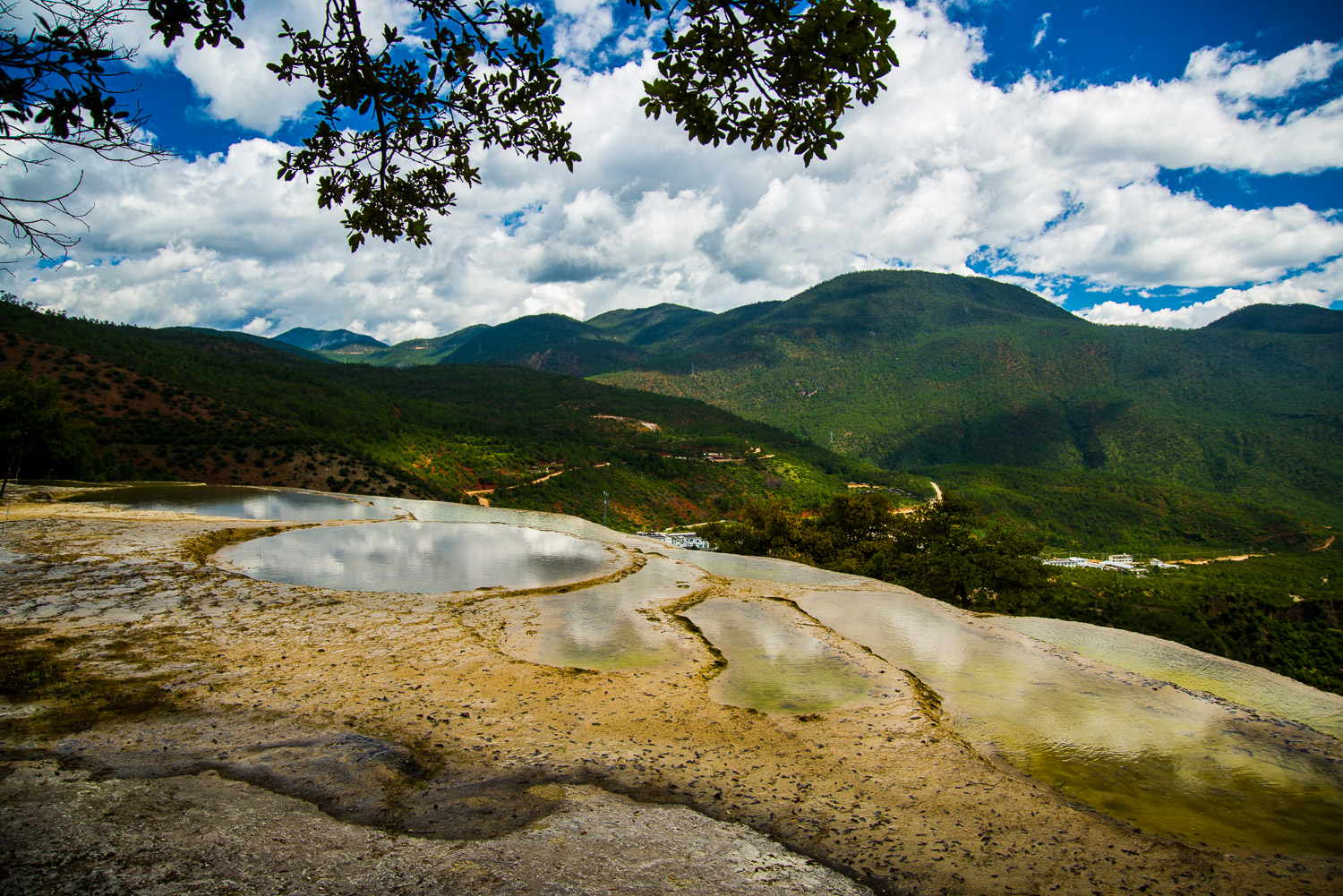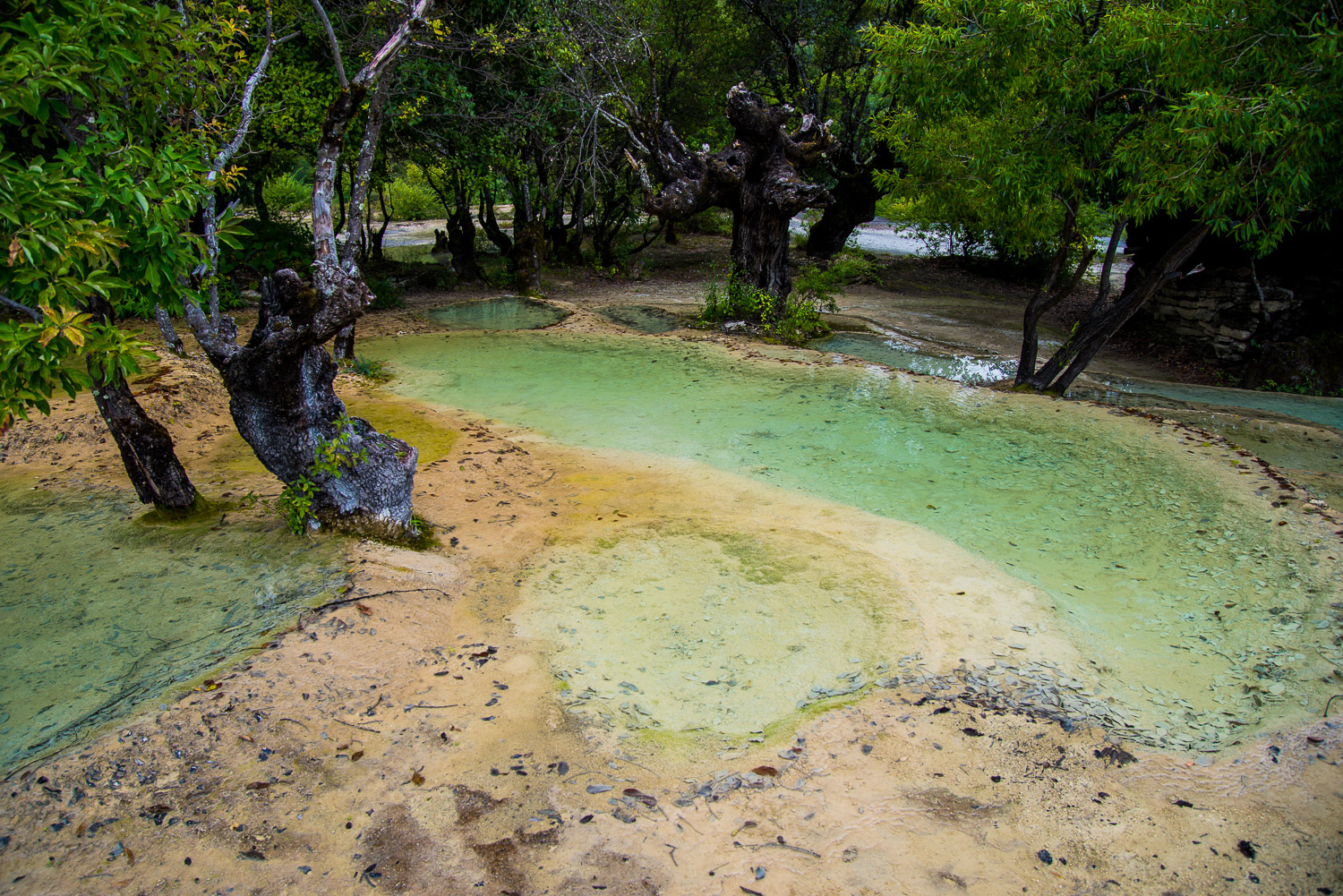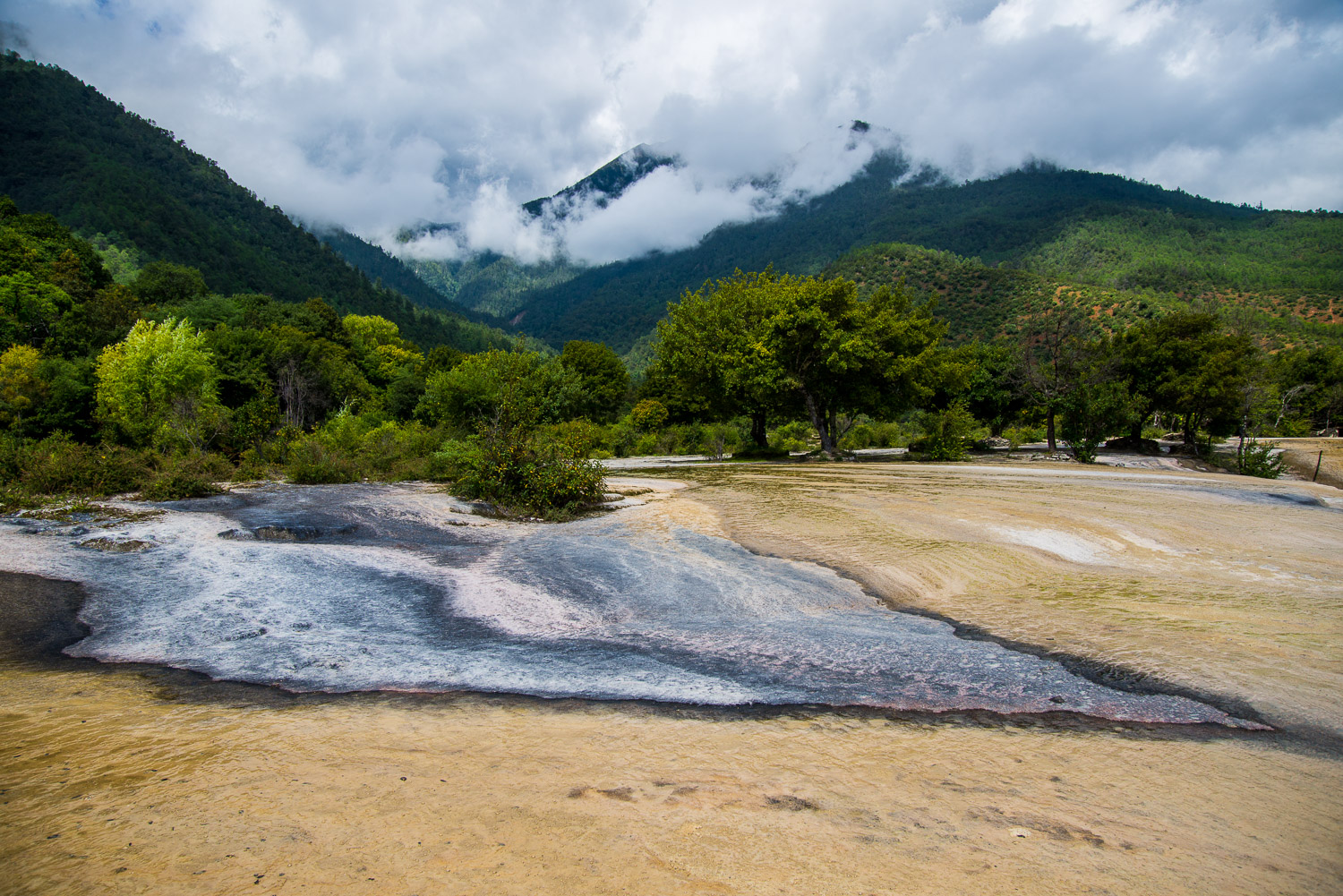The Growing Flower of Yunnan
Yunnan province is very interesting in every aspect, but if you plan to stay in Shangri-La only, without visiting the surrounding area, you are bound to leave China culturally impoverished! Enrich your soul, bring home the landscapes that are difficult to describe in words, and be part of the culture that has not changed for centuries.
If we had mentioned Baishui Tableland you would have probably rolled your eyes and seriously considered not to leave your hotel. You would have asked if the distance of 100 kilometres (62 miles) was going to be too much trouble just to spend some time at the tableland we had mentioned! Maybe you think rationally, but are you right? No, you are not! Let’s start from the beginning!
During autumn the surrounding area of White Water Terraces is covered in bright colours of different flowers and leaves, and therefore the water cascading down the terraces creates white contrast in the middle of the mountain.
The picturesque scenery is the result of continuous calcium carbonate deposition from the spring water of Haba Snow Mountain.
If you look at that natural phenomenon from the foot of the mountain, you may not get the impression that the water actually cascades over the terraces with their overall height of 140 metres (460 feet). While looking toward the tableland, located at 2400 metres (7874 feet) above sea level, you will realize that the 160 metres (525 feet) wide and 140 metres (460 feet) high Baishui Terraces are not of negligible size at all. They are actually the largest natural phenomenon of that kind in China. If we also add the fact that White Water Terraces are between 200,000 and 300,000 years old, then you will understand why every visitor tells a recount of their trip to Baishui Terraces with joy and enthusiasm.
White Water Terraces is the English version of its original name “Shi Bu Zhi”, which means “The Growing Flower”.
At the beginning we said that as soon as you arrive at that locality you become culturally enriched. Actually… anywhere in China you will be pleasantly surprised in different ways, the only question is how much time you would wish to have dedicated to yourself for getting to know the cultural heritage of the country. Believe us, an intensive course on this subject would take years.
When you indulge your senses in the murmur of the water, colours, and air that surround you, you should know that you are close to the watercourse, which makes White Water Terraces a treasure which you cannot steal and take home with you, and that you are in the cradle of Dongba culture of the Naxi ethnic minority community.
Maybe you will wonder why it is important!? More than seven centuries ago, the majority of the Naxi people had settled on the outskirts of the Tibetan tableland, the mountains of north Yunnan, to be exact. And for that reason, the city of Lijiang has become the cultural and economic hub. Because Lijiang is situated at the first meander on the Yangtze River, the Naxi people have, for centuries, been at the intersection of cultural, commercial, and religious exchange between the civilizations of ancient China, Tibet, India, and Southeast Asia. Although there had been different influences throughout centuries, the Naxi people have developed a strong sense of national identity and cultural pride, the key factors contributing to their richness and uniqueness.
Although the Naxi ethnic minority has a population of only about 300,000 people, they have drawn the word’s attention with their unique cultural inheritance.
In fact, the word Dongba signifies the animistic belief system of the Naxi population and its shamans, and it actually means “knowledgeable one”. Also, Dongba shaman positions are hereditary and it is believed that they are the intermediaries between Heaven, mankind, and Earth. All Dongba shamans are well versed in the local customs, medicine and duties of a doctor, fortune-telling, literature, and ancient dancing.
Clarification: Animism is the belief that all natural objects contain an inner spiritual essence and the ability to perceive like humans. Animism is also the belief that souls may exist apart from their material bodies.
Dongba shamans are considered the pillars of Dongba culture, the culture consisting mainly of Dongba religion, its art, and traditional and pictographic scripts.
Clarification: Pictograph or pictogram (from Latin pictus, “depicted/portrayed”). In its earliest shape in scripts, it represents a picture of an object, or objects, and serves as a symbol of a term, group of words, or single word.
Ancient Dongba books had originally been written on tree barks with bamboo pens filled with ink. Those scripts drew attention for the first time at the end of the 19th century, when a French missionary brought some samples home with him. It has been estimated that there are 30,000 scripts, and that large international academic institutions and museums have exhibited about 12,000 volumes so far. The Library of Congress in Washington DC alone has 3,000 scripts on its shelves.
Nowadays, the studies about the Naxi people include linguistics, literature, sociology, ecology, culture, and religion. The Chinese government established the Dongba Research Institute at the Yunnan Academy of Science in 1991, proving their dedication to preserve the Naxi people’s heritage.
The truth of the matter is, Dongba culture has an influence mainly on local communities, but its preservation is of international significance. While visiting Baishui Tableland you will be impressed with the sights that surround you, and conversations with local people who wear traditional outfits will inspire you to ask many questions, resulting in endless talk…
You are going to spend time in one place, but be sure that you will return with the impressions equivalent to a five-day journey… It is necessary to travel 100 kilometres (62 miles) in one direction, but with the right companions this trip will be a breeze! Remember your secondary school excursions and be sure that this time your trip is going to be much better!
You can go from Shangri-La to Sanba, located at the foot of White Water Terraces, by a regularly scheduled bus. The trip takes about 4 hours and one-way tickets cost 16 yuans (CNY), or 2.5 euros (EUR), each.
Tourists can take a special bus route from Shangri-La to White Water Terraces, the bus service is available from 9am to 2pm. The bus fare is 26 yuans, or just below 4 euros.
If you want to get there faster, you have the option of taking a taxi between those two places, which will cost you about 200 yuans, or just over 30 euros.
Recommendation: You need to take into account the Golden Week holidays, around May 1st and October 1st,, because those weeks are peak tourist season. During that time, hotel and transportation prices are much higher, compared with the rest of the calendar year. If you do not plan to travel to Yunnan province with a tour operator, the recommendation is to book your accommodations ahead of time and to be well informed about the price changes for the aforementioned period.
The estimated duration of the White Water Terraces tour is about 2 hours. A professional tour guide for sightseeing at this locality will cost you 30 yuans (around 4.5 euros). When you take into account all the positive impressions that you will get by visiting that place, you will not mind the distance. The affordable tickets and inexpensive transportation will allow you to purchase and bring home souvenirs that will inspire you to visit China again.
—
Copyright: triptease.me
author: Nenad Butaš
photo: Marko Rupena
text.en: Dragan Dobožanović
Content CANNOT be used without permission!





